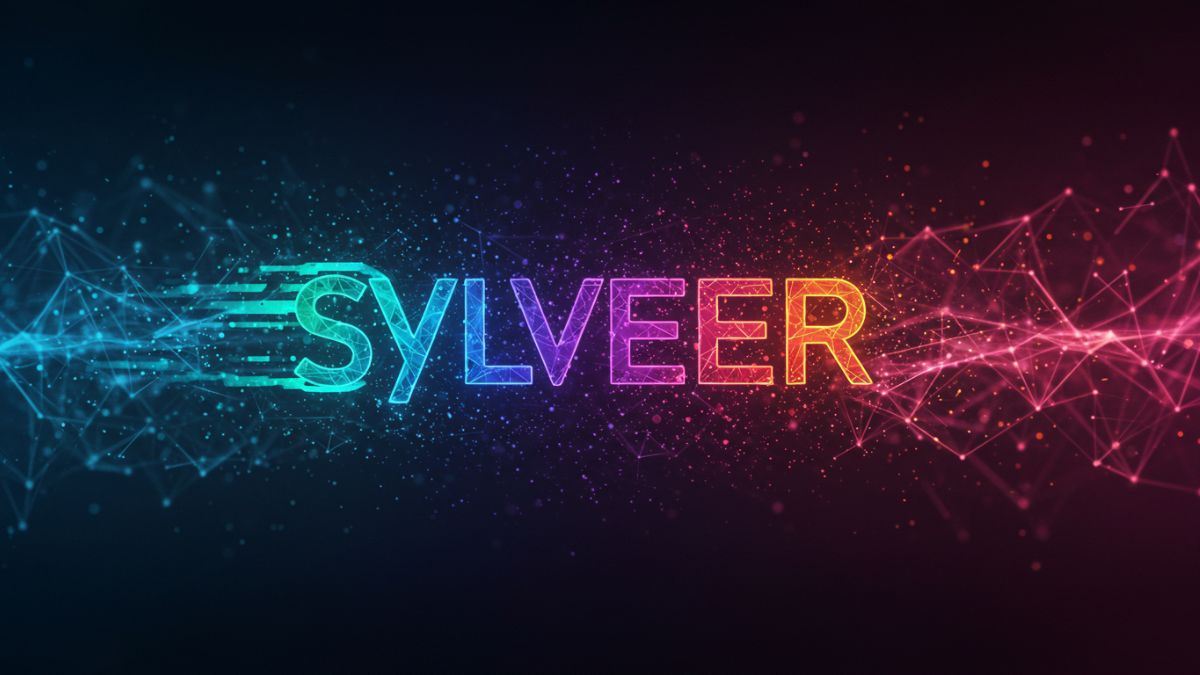TECHNOLOGY
Translation Technology and Tools for HR Professionals

In today’s globalized business environment, Human Resources (HR) professionals must navigate the challenges of language barriers within diverse workforces. Translation technology and tools are crucial for facilitating communication, ensuring legal compliance, and managing multilingual documentation. These tools not only streamline workflows but also enhance company culture by enabling HR professionals to recruit globally and provide training materials in various languages, thus promoting greater understanding and engagement among employees.
Embracing the nuances of translation technology helps HR professionals stay ahead in bridging language gaps, ensuring that organizations not only comply with international regulations but also embrace and celebrate cultural diversity. The integration of advanced technological solutions with a human-centric approach is key to transforming HR operations, making them more inclusive and effective in a multinational context.
Overview of Translation Tools
In the fast-paced world of HR, you need translation tools that are efficient and reliable. These tools help you bridge language gaps in your global workforce and ensure clear communication.
Machine Translation Engines
Machine translation engines are the powerhouses behind instant translations. You’ve likely heard of Google Translate or Microsoft Translator; these use complex algorithms to translate text in seconds. Keep in mind that while these engines are quick and easy to use, their accuracy can vary with language pairs and technical jargon.
CAT Tools
CAT (Computer-Assisted Translation) tools are a favorite among professional translators. They don’t replace human expertise but enhance it by remembering phrases and terms you’ve translated before. For example, SDL Trados and MemoQ help you maintain consistency across HR documents. Plus, they can save you time with features like translation memories and glossaries.
HR-Specific Translation Software
This unique software category is tailored to human resources needs. Such tools can handle sensitive employee information while complying with data protection standards. Products like Text United offer HR-centric features, including seamless integration with HRM systems for a smoother workflow. This ensures that you can manage multilingual teams without breaking a sweat.
Best Practices for Integrating Translation in HR
When it comes to incorporating translation in HR, focusing on localized strategies, empowering your multilingual teams through training, and safeguarding employee privacy are essential steps to ensure a smooth and respectful multicultural workplace environment.
Localization Strategies
To effectively communicate with your global workforce, it’s important to adapt your HR materials to the cultural and linguistic nuances of each region.
- Language Matching: Ensure all documents, such as company policies and safety regulations, are not only translated but also localized to resonate with the employees.
- Cultural Sensitivity: Adapt HR initiatives to align with local customs and cultural expectations to foster better engagement.
Training for Multilingual HR Teams
Investing in the language and cultural training of your HR team is vital to handling the nuances of multilingual communication within the company.
- Regular Training Sessions: Schedule ongoing language training and cross-cultural workshops for HR staff to improve their communication skills.
- Clear Communication Protocols: Develop a clear set of communication guidelines that outline best practices for language use in both internal and external HR correspondence.
Protecting Employee Privacy
Maintaining confidentiality and privacy in employee communications is crucial, especially when handling sensitive information across languages.
- Secure Translation Tools: Employ translation tools and platforms that adhere to stringent data security standards to protect personal information.
- Privacy Training: Educate your HR team on the importance of privacy and the careful handling of translated documents containing personal data.
Case Studies in HR Translation
Effective translation in HR can profoundly impact workforce management across borders. Let’s explore how translating tools and technologies are making a real difference in the HR sector. Translating Contracts, Compliance and HR Documents ensures that all staff comprehend essential documents accurately, fostering clear communication and adherence to regulations across different languages.
Recruitment Campaigns
In the competitive landscape of talent acquisition, multilingual recruitment campaigns are essential. One notable case saw a tech giant expanding into Asia. The company leveraged translation services to adapt their job postings and recruitment materials, accounting for linguistic nuances and cultural sensitivity. The result was a 20% increase in qualified applicants, proving that clear communication in the local language can significantly broaden the talent pool. This improvement aligns with the benefits offered by professional human resources translations, ensuring that all staff comprehend essential documents.
Global Training Programs
Global training programs often fall short without proper translation. A case in point involves a multinational retail chain that introduced an e-learning platform for employee training. By translating content into multiple languages and considering cultural context, the chain saw a jump in course completion rates by over 30%. Staff reported feeling more engaged when training material was available in their native language, highlighting the importance of translation in employee development and satisfaction.
Policy Localization
The localization of policies is crucial for international compliance and employee relations. A global bank had to distribute updated compliance policies to its branches worldwide. By localizing the content, not only legal compliance, the bank enhanced policy understanding among employees, reducing the risk of non-compliance. In this context, professional translation services are vital in minimizing risks and ensuring that all staff understand key documents, such as contracts and the localized policies themselves.
Conclusion
Translation technology and tools are indispensable for HR professionals in today’s globalized business environment, helping to overcome language barriers and manage diverse workforces effectively. These tools facilitate communication, ensure legal compliance, and foster an inclusive company culture by enabling the recruitment and training of global talent. Ultimately, by integrating advanced translation technologies with a focus on cultural and linguistic nuances, HR professionals can enhance organizational operations and support multinational growth, making workplaces more adaptable and interconnected.
TECHNOLOGY
The Rise of Laaster: A Mysterious Term Turning Heads in Digital Culture

In a world overflowing with trends, slang, and ever-evolving terminology, the word laaster stands out—mysterious, intriguing, and increasingly relevant. While not widely known, laasters is gaining attention across online platforms, creative spaces, and brand discussions. It’s more than a word—it’s an idea, an identity, and in many ways, a movement. This article explores the concept, potential meanings, and cultural impact of laasters.
Origins and Interpretations of Laasters
A Word Without Borders
Unlike common dictionary terms, laaster doesn’t come with a precise definition. That’s part of what makes it captivating. Some view it as a creative twist on words like “laster” or “blaster,” while others see it as a fabricated term designed for branding or artistic identity.
The beauty of laasters lies in its ambiguity—its ability to mean different things in different contexts.
Possible Roots of the Term
-
Linguistic Creativity:
Laaster may have originated from online pseudonyms or usernames, where uniqueness is key. People often combine sounds or spellings to create original identities—laaster fits that mold. -
Brand Influence:
Entrepreneurs, musicians, and designers often create or adapt unique words to name their projects. Laasters could have emerged from this trend, giving it a stylish, modern vibe. -
Philosophical Meaning:
Some speculate that laasters represents a feeling—a mood, concept, or phase in life. Just like “aesthetic” became a way to describe a vibe, laasters could be next.
The Modern Appeal of Laaster
Why Is Laaster Gaining Popularity?
In today’s culture, individuality matters more than ever. Whether it’s choosing a brand name, a social media handle, or writing a blog, creators want to stand out. Laasters offers a rare opportunity—it’s fresh, flexible, and completely open to interpretation.
It’s also:
-
Short and catchy
-
Memorable
-
Versatile across industries
-
Not overused
How Laaster Is Being Used Today
1. Personal Branding
Digital creators are increasingly using laaster as a name or concept behind their identity. It adds a layer of mystery while still sounding sleek and professional.
2. Product or Brand Names
Startups are known to invent new words to avoid legal and domain conflicts. Laasters is ideal for companies in design, tech, music, or fashion looking for a distinctive and trademarkable name.
3. Art and Creative Work
Artists may use laasters as a title for collections, projects, or series. It works well in modern and abstract art forms, giving room for free interpretation.
The Cultural Significance of Laaster
In internet subcultures, new language emerges daily. Some terms disappear, but others gain traction. Laaster feels like one of those rare words that has the potential to last. It taps into our desire for uniqueness and innovation without being tied to one fixed idea.
Much like how “meme” or “aesthetic” evolved from niche concepts to cultural standards, laasters could follow a similar path in digital spaces.
SEO and Marketing Potential of Laasters
A Hidden Gem for Digital Marketers
From a digital marketing standpoint, laaster is a goldmine:
-
Low competition: Few websites are targeting this keyword, giving you a better shot at visibility.
-
High curiosity: Users encountering it for the first time are likely to click just to learn more.
-
Memorability: It’s easier to remember than long, generic brand names.
Whether you’re blogging, building an online shop, or starting a podcast, including laasters in your strategy may boost originality and search rankings.
Practical Tips for Using Laaster Creatively
A. Domain and Website
Registering a website with laaster in the domain (e.g., laasterstudio.com) is a smart move. It adds brand value and uniqueness.
B. Visual Branding
You can build a color palette, logo, and brand identity around the term. Consider using soft, neutral tones or futuristic elements to highlight the modern feel of laasters.
C. Social Media Identity
Secure usernames that include laaster on platforms like Instagram, TikTok, or Twitter. It helps build a cohesive digital presence and distinguishes you from others.
Challenges in Defining Laaster
As with any emerging term, laasters comes with challenges:
-
Undefined meaning: It may confuse users who are used to traditional definitions.
-
Limited search volume: It may take time for search engine traction to build.
-
Cultural adoption: Without broader use, it might stay in niche communities.
Still, these are small hurdles for a term with so much creative freedom.
Will Laaster Become a Global Trend?
While it’s hard to predict viral success, laaster has the qualities of a trend-worthy term. It feels personal, stylish, and open-ended—perfect for the times we live in.
With the right influencers, artists, or entrepreneurs behind it, laasters could evolve into a cultural symbol, just like many internet-born words before it.
Final Thoughts: The Future of Laaster
To some, laaster may just be a made-up word. But to creatives, marketers, and forward-thinkers, it’s a blank slate full of potential. It represents the way we shape language in the digital age—intentionally, creatively, and often without rules.
If you’re seeking something different to name your brand, define your aesthetic, or build your online identity, laaster could be the perfect fit. After all, in a crowded digital world, originality is everything—and laasters offers just that.
TECHNOLOGY
Sylveer: Defining a New Era of Digital Identity and Expression

In today’s world of rapid digital evolution, names carry power. Whether you’re a brand, influencer, or creator, the name you choose becomes your story. One such rising term in the digital landscape is Sylveer—a word that’s steadily gaining recognition for its sleek appeal and versatility. But what exactly is Sylveers, and why is it becoming a go-to name in creative and online communities?
This article explores the origin, significance, and future potential of Sylveers in the digital world.
What Is Sylveer?
Sylveer isn’t just a name—it’s a brand, an identity, and for many, a fresh start online. While it may sound like a stylized version of “silver,” it takes on a life of its own in digital culture. Whether used as a social media alias, a business brand, or a creative persona, Sylveers exudes a clean, futuristic, and elegant vibe.
The beauty of the name lies in its simplicity. It feels familiar yet distinctive—exactly what modern digital branding demands.
The Rise of Sylveer in Online Culture
A Versatile Digital Identity
In an internet-driven world, where usernames and domain names are often taken, creators seek something memorable yet available. That’s where Sylveers shines. Its uniqueness makes it:
-
Easy to claim across platforms
-
Flexible for various industries
-
A strong visual and phonetic brand
Many new entrepreneurs, influencers, and artists are now adopting Sylveer as a moniker or brand name, giving it a place across multiple digital realms.
Not Just a Name, But a Statement
Sylveer is becoming symbolic of:
-
Minimalist digital lifestyles
-
Creative freedom
-
Branding that values quality over quantity
As trends shift toward more refined and meaningful identities, Sylveers sits comfortably in this evolution.
How Sylveers Is Used in Creative Spaces
1. Art and Design
Graphic designers and visual artists often look for names that capture style and creativity. Sylveer does just that. You’ll find it attached to design portfolios, Behance profiles, and curated Instagram pages showcasing aesthetic visuals.
2. Fashion and Branding
For fashion creators, Sylveers offers a sleek identity that fits modern streetwear and luxury. Clothing labels and boutique stores use it to present a polished and upscale brand image.
3. Tech and Digital Startups
Startups in web design, software development, or even NFT marketplaces use Sylveers to represent forward-thinking solutions. Its futuristic ring adds value to brands in:
-
Fintech
-
Web3
-
App development
Why Choose Sylveer as Your Brand or Alias?
Originality
With millions of profiles online, it’s hard to stand out. Sylveer isn’t oversaturated, making it a rare and valuable brand name for individuals and businesses alike.
Elegance and Simplicity
A good name is one that’s easy to remember but hard to forget. Sylveers strikes that balance—short, clean, and modern. Whether in logos, email addresses, or product names, it looks and sounds professional.
Future-Proof Branding
Trends change, but names like Sylveers carry a timeless quality. It doesn’t tie itself to any one genre or platform. That flexibility gives you long-term control over your digital identity.
Building a Sylveer Brand: Key Tips
If you’re thinking about adopting Sylveer as your brand or personal handle, here’s how to build around it:
1. Secure Your Domains and Handles
Claim the Sylveer name on platforms like:
-
Twitter (X)
-
TikTok
-
YouTube
-
Your own domain (e.g., sylveer.co or sylveerstudio.com)
2. Develop a Consistent Aesthetic
Sylveers branding works best with:
-
Monochrome color schemes (black, white, silver)
-
Minimalistic design elements
-
Clean typography (sans-serif fonts)
3. Tell a Story
Even with a powerful name like Sylveer, storytelling remains key. Share your mission, process, or passion behind the brand. Authenticity will make your version of Sylveer stand out.
Sylveer in the Social Media Scene
Influencers are increasingly turning to names like Sylveer because they:
-
Resonate with a young, digital-savvy audience
-
Look great on profile banners and bios
-
Are SEO-friendly, improving discoverability
Some popular uses include:
-
@iamsylveer (lifestyle influencer)
-
@sylveer.creates (art and visuals)
-
@sylveer.tech (digital products)
Real-World Examples of Sylveer Success
Case Study 1: Sylveer Visuals
A freelance visual artist launched a brand called “Sylveers Visuals,” featuring motion graphics and animation. Within six months, their unique identity helped secure brand deals and portfolio exposure globally.
Case Study 2: Sylveers Collective
A digital marketing agency named “Sylveers Collective” offered branding services to creators. Their name alone drew in clients impressed by the clean, modern presentation.
Is Sylveers Right for You?
Choosing a name or identity is a personal decision, but Sylveer offers a lot of value:
-
It’s distinctive but not complicated
-
It sounds premium and looks modern
-
It fits nearly any digital niche, from art to tech
If you want a brand that sets you apart, Sylveer is worth considering.
Conclusion: Sylveer Represents the Digital Future
As digital presence becomes more important than ever, names like Sylveer help define the modern identity. Clean, unique, and filled with potential, Sylveer isn’t just a brand—it’s a movement.
Whether you’re launching a startup, creating a YouTube channel, building a fashion label, or starting a blog, Sylveers can be the name that gives your digital dreams a distinct voice.
TECHNOLOGY
Proven Ways to Increase Online Sales by Garage2Global

In today’s rapidly growing digital economy, increasing online sales is more than just launching a website and waiting for customers to arrive. It requires strategy, innovation, and constant refinement. One company that’s making waves in this space is Garage2Global. Businesses across industries are now turning to this firm to increase online sales by Garage2Global’s effective digital growth strategies.
So, what exactly does Garage2Global do differently, and how can your business benefit from its approach? Let’s explore.
Introduction to Garage2Global
Garage2Global is a digital transformation company that helps businesses grow from a startup (garage) level to a global presence. Their primary focus is helping brands achieve scalable online sales growth through a mix of technology, marketing, automation, and customer-centric strategies.
Whether you’re a small online retailer or a growing service provider, you can leverage the methods used to increase online sales by Garage2Global and make your brand more profitable in today’s competitive online market.
Why Increasing Online Sales Requires Strategy
Online sales growth doesn’t happen by chance. Success depends on visibility, conversion rates, user trust, and brand engagement. Garage2Global brings these elements together using:
-
Optimized websites
-
Targeted marketing campaigns
-
SEO and content strategy
-
Conversion rate optimization (CRO)
-
Data-backed decision-making
Let’s break these elements down.
1. Build a Conversion-Optimized Website
One of the first steps to increase online sales by Garage2Global methodology is building a high-performing website. Your website is the face of your business. Garage2Global emphasizes clean design, fast load times, mobile responsiveness, and intuitive navigation.
An optimized site means your customers can find what they want quickly and check out without friction, reducing cart abandonment and increasing conversions.
2. Boost Organic Visibility with SEO
No matter how good your product or service is, customers need to find it. That’s where search engine optimization (SEO) comes in. Garage2Global creates SEO-friendly content, improves site structure, and conducts deep keyword research to help you climb search engine rankings.
The more visible your site is, the more potential customers you reach—ultimately helping you increase online sales by Garage2Global proven search strategies.
3. Use Targeted Digital Marketing Campaigns
Paid ads aren’t about reaching everyone—they’re about reaching the right people. Garage2Global helps businesses run smart campaigns on platforms like Google Ads, Meta (Facebook and Instagram), and LinkedIn, targeting specific audiences based on behavior, interests, and demographics.
This precision approach ensures ad spend turns into sales rather than just traffic.
4. Leverage Email Marketing and Automation
Email marketing remains one of the most effective tools for customer retention and repeat sales. Garage2Global utilizes email automation to send personalized product suggestions, discounts, and reminders, all timed to increase engagement and conversions.
For example, automated cart abandonment emails recover lost sales. Welcome series emails keep new subscribers engaged. All these tactics help businesses increase online sales by Garage2Globals through continuous touchpoints.
5. Enhance Customer Experience (CX)
Today’s customers expect fast responses, seamless service, and easy access to information. Garage2Global helps businesses implement live chat tools, personalized user journeys, and responsive support systems.
Improved CX builds trust and loyalty, which directly impacts your bottom line.
6. Analyze and Optimize Performance
Another crucial step to increase online sales by Garage2Global is data analysis. They believe in tracking everything—visitor behavior, click-through rates, sales funnels, and customer feedback.
With this information, businesses can quickly identify what’s working and what’s not. Constant improvement leads to better results and more sales over time.
7. Social Proof and User Reviews
Nothing builds trust faster than hearing from other satisfied customers. Garage2Global integrates user reviews, testimonials, and case studies into client websites and marketing materials. When potential buyers see that others trust you, they’re more likely to convert.
8. Influencer and Social Media Marketing
The rise of influencer marketing has created a new sales channel. Garage2Global connects brands with influencers who speak to their target audience, driving traffic and sales through authentic promotion.
Likewise, their team manages social media platforms to increase engagement, brand awareness, and referral traffic—all essential parts of the strategy to increase online sales by Garage2Globals.
Real-World Examples of Success
Several businesses have successfully grown using Garage2Global’s approach:
-
An online fitness equipment store saw a 220% increase in monthly sales after implementing SEO and PPC campaigns.
-
A skincare brand tripled its conversion rate within six months using site redesign, influencer marketing, and CRO.
-
A digital education platform increased customer retention by 50% through email automation and loyalty programs.
These real-world examples prove that structured, strategic action can drive substantial e-commerce growth.
Final Thoughts: Let Garage2Global Be Your Growth Partner
Growing your business online can feel overwhelming. With ever-changing algorithms, rising ad costs, and evolving customer expectations, it’s easy to lose focus. That’s why partnering with a growth expert like Garage2Global can make a massive difference.
They don’t just offer tools—they offer results.
From the first website audit to running high-converting ad campaigns and building retention systems, every step is designed to increase online sales by Garage2Global’s powerful and proven strategy.
-

 GENERAL2 years ago
GENERAL2 years agoDiscovering the Artistic Brilliance of Derpixon: A Deep Dive into their Animation and Illustration
-

 Posts2 years ago
Posts2 years agoSiegel, Cooper & Co.
-

 FASHION2 years ago
FASHION2 years agoThe Many Faces of “λιβαισ”: A Comprehensive Guide to its Symbolism in Different Cultures
-

 Lifestyle2 years ago
Lifestyle2 years agoPurenudism.com: Unveiling the Beauty of Naturist Lifestyle
-

 Lifestyle2 years ago
Lifestyle2 years agoBaddieHub: Unleashing Confidence and Style in the Ultimate Gathering Spot for the Baddie Lifestyle
-

 HEALTH2 years ago
HEALTH2 years agoTransformative Health Solutions: Unveiling the Breakthroughs of 10x Health
-

 Entertainment2 years ago
Entertainment2 years agoGeekzilla Podcast: Navigating the World of Pop Culture, Gaming, and Tech
-

 Lifestyle11 months ago
Lifestyle11 months agoSandra orlow: Unraveling the Story of an Iconic Figure
